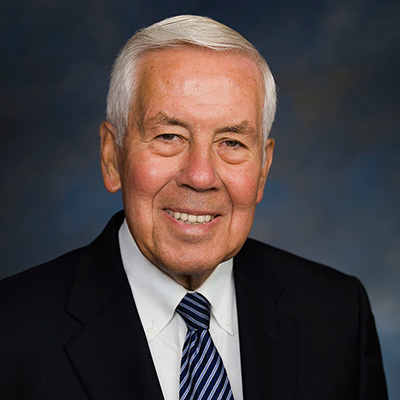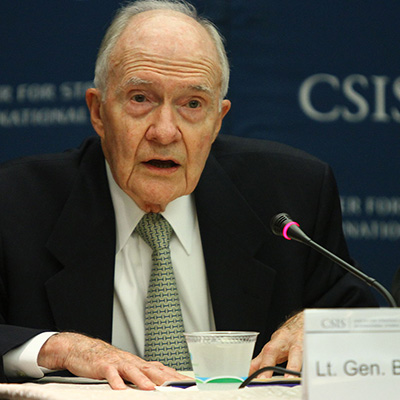The Historic Deal that Will Prevent Iran from Acquiring a Nuclear Weapon
How the U.S. and the international community will block all of Iran’s pathways to a nuclear weapon
Iran Deal Watch Live
Implementation Day
Watch the President's remarks on the impact of U.S. leadership in Iran:
On January 16, 2016, the International Atomic Energy Agency verified that Iran has completed the necessary steps under the Iran deal that will ensure Iran's nuclear program is and remains exclusively peaceful.
Before this agreement, Iran's breakout time -- or the time it would have taken for Iran to gather enough fissile material to build a weapon -- was only two to three months. Today, because of the Iran deal, it would take Iran 12 months or more. And with the unprecedented monitoring and access this deal puts in place, if Iran tries, we will know and sanctions will snap back into place.
Here's how we got to this point. Since October, Iran has:
- Shipped 25,000 pounds of enriched uranium out of the country
- Dismantled and removed two-thirds of its centrifuges
- Removed the calandria from its heavy water reactor and filled it with concrete
- Provided unprecedented access to its nuclear facilities and supply chain
Because Iran has completed these steps, the U.S. and international community can begin the next phase under the JCPOA, which means the U.S. will begin lifting its nuclear-related sanctions on Iran. However, a number of U.S. sanctions authorities and designations will continue to remain in place.
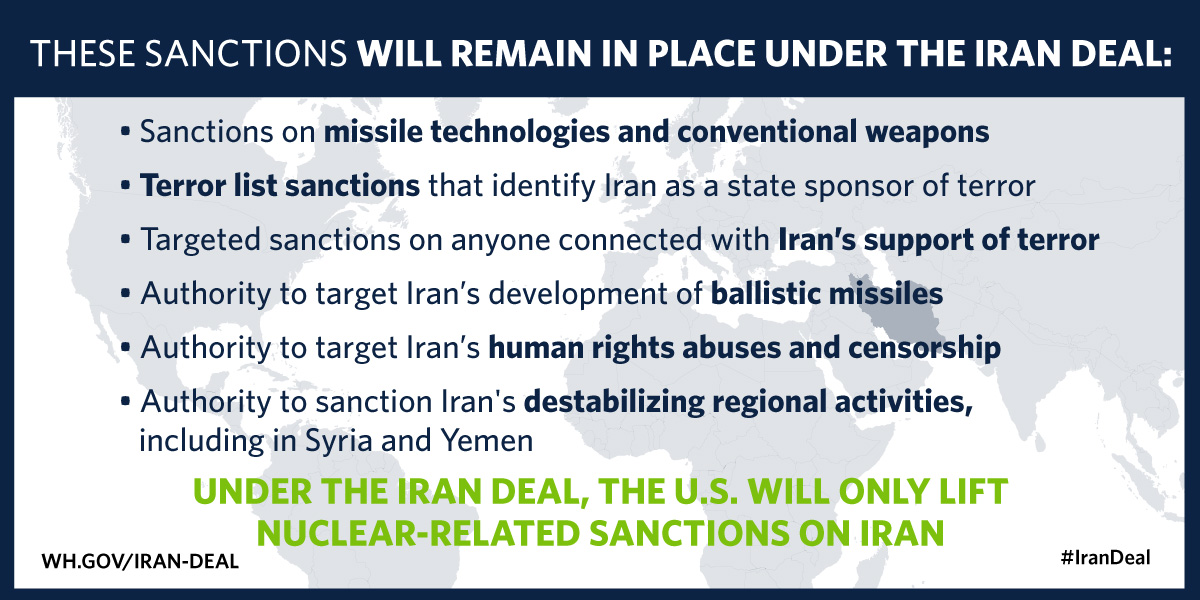
Learn more about the sanctions that remain in place on Iran here.
Read the Deal What You Need To Know (PDF)
Read the Iran Deal facts:
"Will Iran be able to inspect its own nuclear facilities?
No. There is no “self-inspection” of Iranian facilities, and the IAEA has in no way given responsibility for nuclear inspections to Iran. Not now and certainly not in the future.
That is not how the IAEA does business. As IAEA Director General Amano noted, the arrangements between the IAEA and Iran are technically sound and consistent with the Agency’s long-established practice. They do not compromise the IAEA’s safeguards standards in any way. As we have said before—and as we briefed Congress fully in classified settings—the U.S. government’s nuclear experts are confident in the Agency’s technical plans for investigating the possible military dimensions (PMD) of Iran’s former program. Iran will not get additional sanctions relief until the IAEA verifies that Iran has completed its nuclear steps, including those related to PMD.
And let’s be clear—this issue is one of past behavior. The United States has already made our judgment about the past. We are focused on moving forward, in which we will rely on the unprecedented robust monitoring, verification, and transparency measures ever negotiated so we will know that any activities that caused us concern have been stopped. Most importantly, we can snap sanctions back into place if Iran blocks inspections from taking place going forward.
Got more questions?
The Iran Deal blocks the four pathways to a nuclear weapon.
Building a nuclear bomb requires either uranium or plutonium, but thanks to this deal, Iran’s four possible ways to leverage those fissile materials are blocked.
Iran would need two key elements to construct a uranium bomb: enough highly enriched uranium to produce enough material to construct a uranium bomb and tens of thousands of centrifuges.
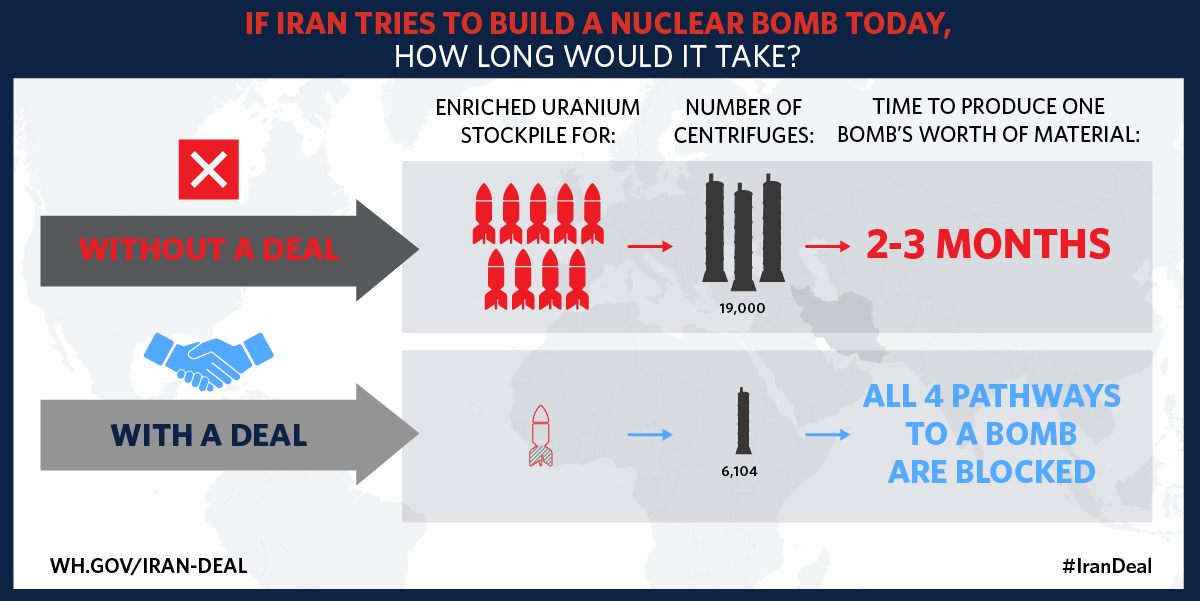
The third way Iran could build a nuclear weapon is by using weapons-grade plutonium. The only site where Iran could accomplish this is the Arak reactor, a heavy-water nuclear reactor. Right now, this reactor could be used in a weapons program, but under this deal, the Arak reactor will be redesigned so it cannot produce any weapons-grade plutonium. And all the spent fuel rods (which could also be source material for weapons-grade plutonium) will be sent out of the country as long as this reactor exists. What’s more, Iran will not be able to build a single heavy-water reactor for at least 15 years. That means, because of this deal, Iran will no longer have a source for weapons-grade plutonium.
Could there be a covert pathway to Iran building a secret nuclear program?
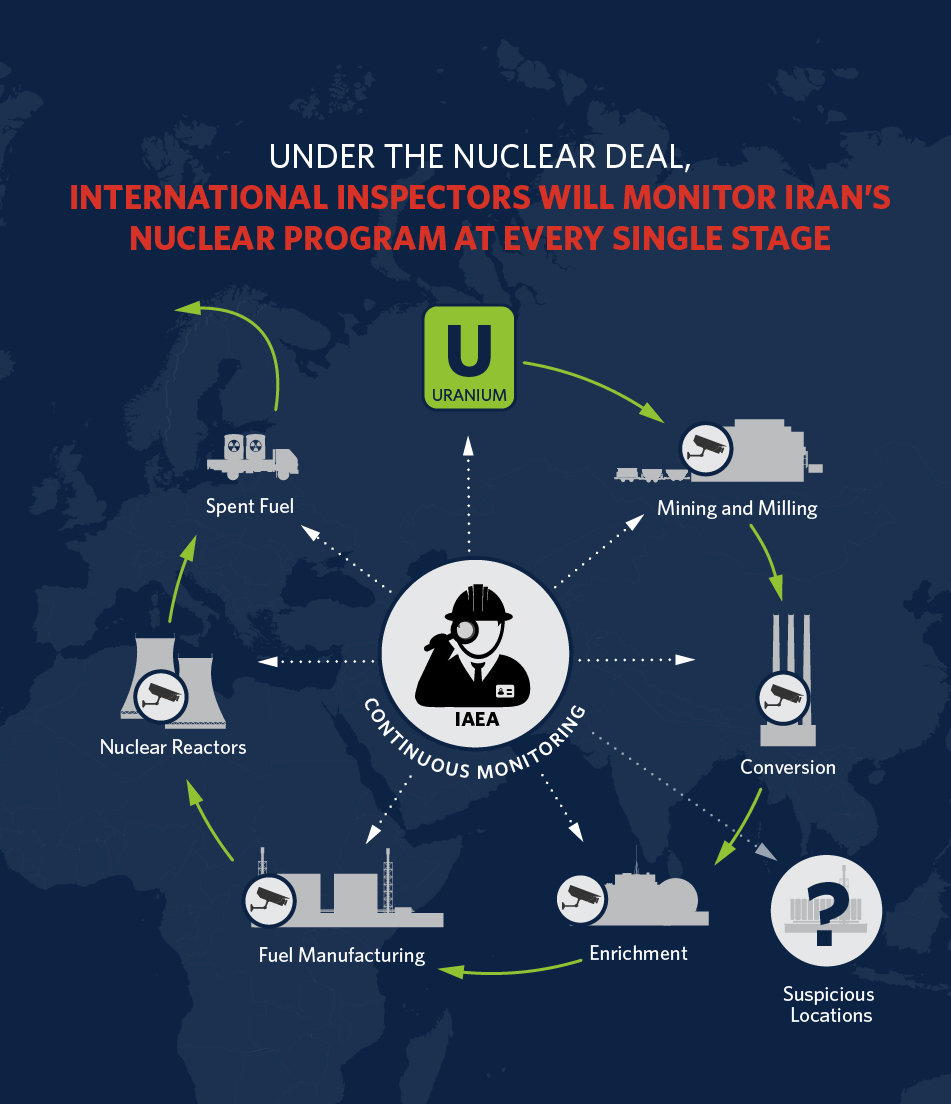
Here's what Iran’s Nuclear Program would look like without this deal:

What the World is Saying about the Iran Deal
Nuclear physicists, military officials, non-proliferation experts, and more than 100 countries across the globe have all voiced their support for the Iran nuclear deal because it is the best solution available to prevent Iran from obtaining a nuclear weapon without taking military action. Explore below to see what they’re saying:





